Freemasonry has its own revelation
Religion and revelation are correlative terms; that is the relation in which man places himself to deity in religion, presupposes the relation in which deity has placed himself to man in revelation, so there can be no religion without a revelation, either genuine or spurious, upon which it is based.
This revelation, in the opinion of its adherents, is the deity’s message to them, and the source of their faith and the warrant for their practices. It is preserved either in the traditions of its priests, in the ceremonials, or recorded in permanent form which record becomes the Sacred Book of that particular religion. The writers are regarded as the spokesmen of deity, and their statements as his oracles. These sacred books become the rule of faith, of worship, and of life to the disciples.
Each of the so-called great religions has its sacred books or peculiar revelation upon which it is based, and which are important factors in their respective religious systems. Pre-eminent among these is Christianity, which has the canonical scriptures of the Old and New Testament, which it holds as the sole revelation of God’s will, and of human redemption and salvation, and the only rule of faith and sole authority in religious questions.
To these Christianity appeals for an explanation of its existence, and as a warrant for its authority, faith and work. It accepts these writings not because they have been placed in the canon, but because Christ is set forth in them, as the way, the truth and the life.
It rejects all other so-called revelations as spurious because they have not Christ in them. Christianity as a religion rests upon the revelation or manifestation of a Person, who is human and divine, who is the Savior of man and of whose nature, history, work and office the Bible is the authoritative, genuine and inerrant record.
Freemasonry is no exception to this principle, that is, that a religion presupposes a revelation. In one sense Freemasonry has more sacred books than any other religion for it tacitly accepts, receives and incorporates into its system all the sacred books of all religions. But it accepts them only as symbols of the will of God.
The revelation upon which Freemasonry as a religion is based is not a book written on parchment, but is the universe itself, in which it claims deity has revealed himself in a sufficiently perspicuous manner so as to be known and served acceptably by his intelligent creatures.
Nature, the material universe, is the revelation which is the correlative to the religion of Freemasonry. It regards all revelations which may be found in the sacred books of any religion, as republications of this primal, adequate and unerring revelation in Nature.
The sole revelation which Masonry recognizes as absolute and from which it derives its peculiar religious ideas, rites and warrant, is Nature or the Universe. Pike says that “the Universe is the uttered word of God,” the “thought of God pronounced.”
“The permanent one universal religion is written in visible nature and explained by the reason and is completed in the analogies of faith.” Buck says, “God never manifested himself to be seen of men. Creation is his manifestation.”
In the Masonic religion God is conceived of as an omnipotent, eternal, boundless and immutable principle, coeval and coextensive with space, in all, through all and above all, divinity immanent in Nature, alike the external cause and result, each without beginning or end, and each alternating forever.
According to Masonry the deity is clothed in the universe. Garrison says, “God created and must continually support the temple of the universe, which he not only forms but in which he also dwells as its eternal, all pervading, ever-present spirit.”
All the more recent Masonic writers whom we have consulted agree that the universe is the sole revelation God ever made of Himself.
Nature then is the book in which Freemasonry finds the divine will expressed. Its sentiments are well expressed by Philo, namely, that Nature is the language in which God speaks. The human voice is made to be heard, but the voice of God to be seen, that what God says consists in acts, not in words. Thus it is clear for all to see, Masonry is the product of the Jewish Kabbalah (Cabala).
Masonry has its own temples
A temple is an edifice erected and set apart in honor of some deity and used for his service and worship. In every prominent city of our land there is found a building which is called the Masonic Temple, erected and dedicated to the service and worship of the Great Architect of the Universe, the Masonic deity. These buildings in their arrangements and design are peculiar to Masonry.
They are the outward and unmistakable mark of an inner religious life and service. In their religious use these temples are distinctively Masonic, and as emphatically set forth a distinct religious system as the temple at Jerusalem set forth Judaism or those of the ancients set forth the worship of the deities to whom they were dedicated.
The construction of these Masonic temples is begun with services in honor of the Great Architect of the Universe, and when completed are dedicated to his worship with elaborate religious ceremonies. They are sacred edifices, devoted to the service and promulgation of a specific religion, whose name and designation is Freemasonry.
Freemasonry has its altars
An altar is a table or pedestal upon which gifts and sacrifices are offered to some deity, and at which supplication and solemn covenants are made. It is especially a mark of religion, an evidence of religious service and worship. In sacred edifices it marks the “holy place” and is generally so situated that it is visible from all points in the sanctuary. The Masonic altar stands in the center of the lodge indicating that the religious acts there performed are the central things in the Masonic religious system.
The Masonic altar is specifically marked as such. Generally we find the distinctive symbols of Masonry engraved upon its sides, and always do the square and compass and the “book of the law” rest upon its top. It stands within the “triangle of lights,” another specific Masonic mark. It is therefore an altar that is distinctively Masonic, and a mark of religion which is Masonic.
At this altar the candidate for Masonry kneels, and at it he solemnly swears allegiance to the institution, promising “ever to conceal and never to reveal any of the secret arts, parts, or points of the hidden mysteries of Masonry, which may have been heretofore, shall be at this time, or any future period communicated to him.”
He then calls upon the Masonic deity to witness his oath and covenant, and binds himself by horrible penalties to be faithful to this Masonic covenant. This covenant from the Masonic viewpoint is paramount to all others which a Mason may enter.
It can never be repudiated nor laid aside. Says the Ritual, p. 30, “We obligate them by solemn and irrevocable ties to perform the requirements of, and avoid the things prohibited by Masonry.” “No law of the land can affect it, no anathema of the church can weaken it.”
Masonry has its religious symbols and emblems
“An emblem comprises a larger series of thought than a symbol which may be said rather to illustrate some single special idea. All esoteric societies have made use of emblems and symbols, such as the Pythagorean Society, the Eleusinians, the Hermetic Brethren of Egypt, the Rosicrucians and the Freemasons. Many of these emblems it is not proper to divulge to the general eye, and a very minute difference may make an emblem or symbol differ widely in its meaning.”
A symbol is a complex thought clothed in a sensuous form. In religion, symbols are sensuous emblems of spiritual acts and objects. The cross as a Christian symbol signifies, to many, that Jesus Christ bore in His own body on the tree, our sins, and that He has made everlasting atonement for them. It signifies that on it, the Lord of Glory died for man, the creature’s sin.
It is a reminder of the purchase price of our redemption and a banner proclaiming the victory of Christ over sin, death and the grave. While it was for ages before our era a symbol of immortality, or of “life to come,” among the pagan nations, it has become emphatically a Christian symbol from the stress the Christian writers laid upon the vicarious sufferings of Christ.
Islam has its symbol, the Crescent. It signifies the Turkish power and the religion permeating and upholding it. And so almost every religion has its symbols, which set forth some prominent phase or conception thereof, or some doctrine thereto peculiar.
Masonry, too, has its unique religious symbols, which are held sacred by Masons, and who make them prominent factors in their worship and covenants. The chief symbols are the holy book, the square, the compass, the all seeing eye, the letter G, etc. The commonly used tools of the stone masons, have also become emblems, jewels and symbols in the craft.
The square and compass were employed by operative masons, but Freemasonry incorporated them into its speculative system, and makes them the symbols of moral and religious principles and sacred objects. They occupy a very high place, as is evident from their presence everywhere in the system.
They are inscribed upon its altars and engraved upon its jewelry. They are as prominent among Masons as the scarab beetle was upon the amulets and religious symbols of the ancient Egyptians. Besides these symbols, Masonry also has a number of emblems and jewels, which have a moral and religious signification in the order, all of which show that Masonry is a religion.
These symbols are reverenced and adored by Masons, especially in their religious services in the lodge. They are used in the Masonic devotions as devoutly as the Romanist counts his beads and adores the crucifix. They are employed to impress the candidate in his initiation, to enforce the obligation and Masonic fidelity to brethren, and to secure favors, positions, and honors in social, political and commercial spheres.
Their use is as prominent in the moral and religious life of the Mason as are the rosaries, images and crosses in that of the Romanist. He appeals to these symbols to prove his sincerity and honesty in his business transactions, employing them as sacred representations of things which his religious scruples regard as inviolable.
And these symbols are peculiarly and exclusively Masonic. In some states they have legal protection making it a misdemeanor for a person not a Mason to use them or wear them even as an ornament.
It has its confession of faith
In the Christian system there is an objective faith, unique and peculiar, which is the pure Christian religion. The rule of that faith is the Bible, the Word of God. That faith received, accepted and believed, makes an individual a Christian. The confession of that faith marks the individual as a Christian.
So also there is an objective and unique faith in the Masonic system. The reception, acceptance and belief of that faith makes men Masons. The confession thereof marks them as Masons. The rule of that faith is the universe. The moral and religious truths which Masons profess to discern in, and derive from the book of nature, constitute the objective faith of Masonry.
That objective faith it sets forth in allegory and symbol, but keeping it deeply veiled. Its symbols, rightly understood and Masonically interpreted, set forth that faith, and that faith accepted by an individual makes him a Mason. To this creed or faith Masonry requires assent from every one who would pass the threshold of its lodge. In this it is inexorable.
This confession of faith in the Masonic deity is its religious test, the test which determines whether the candidate is willing and qualified to receive, accept and live the Masonic religion. With the change of his faith, there is also a change of his religion, if words mean anything and there is any consistency in language.
What Masons believe is indicated in the following:
“The creed of a Mason is the belief in God, the Supreme Architect of the heaven and earth, the dispenser of all good gifts and the judge of the quick and the dead.”
“Masonry does not attempt to interfere with the peculiar religious faith of its disciples, except so far as it relates to the belief in the existence of God, and what necessarily results from that belief.”
“The person who desires to be made a Mason must be a man believing in the existence of a Supreme Being, and of a future existence.”
“The foundation upon which Masonry rests is the belief and acknowledgment of a Supreme Being.”
“The creed of a Mason is brief. It is a creed which demands and receives the universal consent of all men. It is a belief in God, the Supreme Architect of heaven and earth.”
Pike says “Masonry propagates no creed except its own most simple and sublime one taught by nature and reason. The permanent and universal revelation is written in visible nature and explained by the reason, and is completed by the wise analogies of faith. There is but one true religion, one dogma, one legitimate belief.” This creed differentiates the Masonic god from the Christian’s God. This confession of faith in this Masonic Deity carries with it the repudiation of all former faith and religious belief not in harmony with it.
“There is not only to be a change for the future, but also an extinction of the past, for the initiation is as it were a death to the world and a resurrection to a new life.”
This means the extinction of the religious life, faith and hopes of the past profane life. From the Masonic statements, there is no evasion of this conclusion. The ceremony of initiation is Religious. There is a demand for faith in a specific deity, who is not Jehovah, but the Masonic deity, and that fact requires a change in religious views before the ceremony can proceed.
It is a demand that his former faith, if not in harmony with the Masonic faith, be renounced, and repudiated, and extinguished, not openly but tacitly, and supplanted by a faith in “that God whom Masons worship and reverence.” It is a distinctively Masonic confession of the Masonic faith in the Masonic god. And this initiation is also to be a resurrection to a new life, that is a new religious and moral life, and to become alive unto the Masonic Religious Life, requires death unto the former religious life.
Masonry has its own priests
A priest is a religious official, whose duty is to perform specific religious acts. Masonry has its priests of various degrees. “The master of the lodge is its priest.”
If a chaplain is appointed he simply represents the master in the devotions of the lodge. These officials offer the prayers to the Masonic god, the Great Architect of the Universe, and also have part in the public religious exercises in which the lodge may engage.
The chaplain, an appointive office, is generally a minister of the gospel who has been hoodwinked into the lodge, but the services he conducts in that capacity, are Masonic and not Christian. He wears the insignia of his office, addresses the prayers to the Masonic deity, and invokes special favors upon the lodge. The religion expressed or the service conducted is emphatically Masonic, and he who conducts it, is for the time being a Masonic priest.
The religion administered by these religious officials is Masonry
It can not be anything else. The prayers are those provided by Masonic authorities; they are couched in unmistakable Masonic language and they express decidedly Masonic sentiment. The hymns are Masonic, and the scripture passages read are expurgated of all Christian sentiment, so as to make them Masonic. Such passages are taken with slight but necessary modification, says Mackey. The modification is necessary in order to make them agree in sentiment with the Masonic religion.
Masonry has its own peculiar religious forms
Religious Ceremonies Are Proofs of Religion. They are the outward forms in which the inner life or the religious sentiment finds expression. As such they signify and mean something. In some cases impressive and elaborate ceremonies are employed to inspire the devotee with awe, to impress him with the solemnity of the transaction, and to intensify his sense of obligation and duty to deity, and to his fellowmen. Without some form of ceremony, religion would be useless. Rites and ceremonies from the very nature of the religious notions are essential to its power and influence over man. A purely abstract religion can not exist. To be effectual religion must be presented in a concrete form, in befitting and expressive ceremony.
It must be evident to the most indifferent observer that Freemasonry has its own and peculiar religious rites, services and ceremonies. These are the “forms of words” and “the forms of needs” in the institution. They are designed and used on the one hand, to impress profoundly the candidate for initiation, and on the other to strengthen the Mason in his peculiar faith. These ceremonies are the outward signs of a distinct inward religious life, which is Masonry.
They are designed to beget within the Mason the belief that Freemasonry deals with the most sacred things with befitting solemnity; that the lodge is a most holy place, and “that its floor is holy ground.” The candidate is made to feel that the “all seeing eye” is looking down upon him, and that he is about to be ushered into the very presence of deity.
The whole procedure in the lodge whether opening, working, “refreshment” or “closing” is a religious ceremony, intensely and exclusively religious, more so than many services conducted in a Christian church. It is worship, ceremony, service, religion throughout, and therefore the conclusion is irresistible that Freemasonry is a religion.
The Masonic initiation is purely a religious ceremony. It is as much so as is a confirmation or baptism in the churches, or the solemnization of marriage, or the ordination of a minister of the gospel. It is a ceremony in which a solemn agreement is made in which the Masonic deity is recognized as a party to the covenant, and whose help is implored.
In this act certain duties are set forth and recognized, obligations are assumed, solemn promises are made, and the god of Masonry is called upon to witness and confirm the same.
The only difference between the purpose of the ceremonies of the church and of Masonry, is in the kind of religion practiced and set forth. If the church is a Religious Institution, Masonry is also.
The initiation proper is preceded by the instruction of the candidate as follows: “Mr. J.H., the institution of which you are about to become a member is by no means of a little and trifling nature, but of high importance and deep solemnity. Masonry consists of a course of ancient hieroglyphical and moral instruction, taught according to ancient usages by types, emblems and allegorical figures. Even the ceremony of your gaining admission within these walls is emblematic of an event, which all must sooner or later experience. It is emblematic of your final exit from this world to the world to come. You are doubtless aware that whatever a man possesses here on earth, whether it be titles, honors, or even his own reputation will not gain him admission into the celestial lodge above, but previous to his gaining admission there, he must become poor and penniless, blind and naked, dependent on the sovereign will of our Supreme Grand Master; and in order to impress these truths more forcibly upon your mind, it is necessary that you be divested of your outward apparel and clad in a garment furnished you by the lodge.”
This explanation has an intensely religious flavor. Everything is symbolic. The entrance into the lodge, even to its minor details, is emblematic of his entrance into heaven. The lodge here is a type of the lodge above.
The Grand Master here represents the Grand Master in heaven. The titles and honors here, earthly titles, count for nothing, but the honors, titles and secrets bestowed by the lodge count for everything in the lodge above.
The garment furnished by the lodge symbolizes the Masonic righteousness which will admit him into the lodge above. All this is religious ceremony.
After further preparation and questioning, the initiation proper begins. To the question, “Who comes here?” the senior deacon replies for the candidate, “A poor blind candidate, who is desirous of being brought from darkness to light, and receiving a part of the rights, lights and benefits of this worshipful lodge erected to God and dedicated to the holy Saint John, as many a brother and fellow has done before him.”
The candidate, after further instruction is ordered to kneel at the altar and attend prayer, when the lodge is called up and the following prayer is offered: “Vouchsafe thine aid Almighty Father of the Universe to this our present convention; and grant that this candidate for Masonry may dedicate and devote his life to thy service, and become a true and faithful brother among us. Endue him with a competence of thy divine wisdom, that by the secrets of our art, he may be better enabled to displace the blots of birth, love relief and truth, to the honor of thy holy name. Amen. So mote it be.”
Then a confession of faith is demanded of the candidate, and the ceremony goes on, every step being a religious act, culminating at the altar where the oath is taken and the covenant entered into, which, according to Masonic teachers, is the highest obligation a man can assume here on earth.
The initiation is positively religious, a religious allegory. In a general way, the stripping of the candidate and putting on the garments of the lodge, is emblematic of his conversion to Masonry, that is putting off the vices of the profane life and putting on the virtues of Masonry, the exchange of the polluted and profane worldly honors for the sacred honors of Masonry. It is with this ceremony that the Mason, unknowingly, renounces Almighty God and the Lord Jesus Christ, and puts on the mantle of a false god!
This initiation is his regeneration fitting him for the celestial lodge above. He is ushered either barefooted or slipshod into the lodge, to symbolize that he is on holy ground. He is hoodwinked to symbolize that he is in spiritual darkness, and needs the glorious light of Masonry in order to be able to gain relief, seek truth and subdue his passions. He receives solemn instructions at the south, the west, and the east as to his duties. This is the symbolic pilgrimage and symbolizes life and soul’s travails.
He is solemnly obligated to keep secret and sacred that which is committed to him in the lodge then and thereafter, and as an evidence of his sincerity of intention kisses the holy book, and is then freed from his cabletow, and by the removal of the hoodwink, is brought to Masonic light, amidst clapping of hands and stamping of feet. This is the shock of entrance and symbolizes the throes of the new birth, the birth into Masonry.
At the door of the lodge the candidate confesses his ignorance, blindness and servitude to his passions. At the threshold of his induction he confesses his faith in the Masonic deity. Within the lodge all is religious ceremony. The “divestment” and “reinvestment,” the “declination” and “perambulation,” “salutation” and “obligation,” the “induction,” “pilgrimage” and “ceremony,” “prayers” and “lectures” are all religious and have a religious signification.
After his covenant “he is received as a brother among them.” He is received and fellowshiped by the fraternity, is regarded no longer polluted and profane, and is then symbolically “placed” as a stone in the temple. He has been regenerated, purified and placed. All these are religious acts and ceremonies. It is too apparent to be denied.
Thus far we have had in mind the first degree only. The ceremonies in the higher degrees are more intensely religious than in the first degree. They advance until they become “sublime and ineffable.” These ceremonies are all designed to set forth a peculiar religion and that religion is Masonry.
In the third degree, the climax of the ceremony is the mock murder and resurrection of Hiram Abiff, the “Christ” of Masonry. This is made as solemn as the factual nature of the thing will permit. But it is a religious ceremony, a resurrection service, by which the candidate becomes entitled to eternal life. In a sense it is in Masonry what the resurrection of Christ is in Christianity.
“Few candidates may be aware that Hiram whom they have represented and personified is ideally and precisely the same as Christ. Yet such is undoubtedly the case. This old philoposphy shows what Christ as a glyph menas, and how the Christ state results from real initiation, or from the evolution of the human into the divine.”
Masonry has its authorized rituals or book of forms
A ritual is a book containing a prescribed order or form for religious services. Rituals are external marks and evidences of the exercise of religion. Masonry has its authorized rituals and forms of service. They are in evidence in the lodge room, and in their public services, such as dedications, installations, and burials.
In the rituals these services are prescribed and the details indicated by appropriate rules. This stamps Masonry as religion, as much as the die stamps the precious metal as coin.
Masonry is the most ritualistic of all secret religions. It has its forms for everything, initiations in the various degrees, dedications of public buildings, either civil or Masonic, laying of corner stones, installations, burials, baptisms for infants and youths, and what not. And these prescribed forms are faithfully adhered to. No departure from them is permissible. These rituals are necessary in order to prevent this Masonic religion from becoming corrupted by omissions or additions, for every ceremony must be “in due form.”
It has its own peculiar worship
The members of the Masonic fraternity exercise themselves in their Masonic religion according to the forms of service prescribed by the order. They take part in these services, and do it heartily. They are as devout and reverent in the lodge, as is the Christian in his worship in the sanctuary. There are set prayers, distinctively Masonic, which are solemnly and reverently said.
There are responses in the religious services in the lodge, which they ardently repeat. There are genuflexions, postures, and attitudes, all emphatically religious and distinctively Masonic, which they cheerfully assume, and there are hymns and odes, also Masonic, which are joyously sung. These exercises would be very incongruous in a church because the religion they express is foreign to that which a Christian church teaches.
It also has a distinctive burial service for its dead. It is for those only who die in the Masonic faith. Only third degree Masons are entitled to Masonic burial. To hold this service for one who is not a Mason, would be from the Masonic viewpoint, sacrilege of the highest kind. And only Masons take part in the burial service.
It is not for the lips of the “profane.” It is the exercise of a purely Masonic religion by men who have been made Masons in due form. It has a Baptismal service for infants and for youths. It has in some countries a marriage and communion service. It has all the external and essential marks of Religion. Whatever else may be found in Masonry, science, philosophy, history or ethics, the dominant factor in the institution is religion. Freemasonry is a Religion!
Freemasonry has its own distinctive deity whom it worships and adores
Freemasonry professes to have in its possession a correct knowledge of the Great Architect of the Universe who in its view is the true God. This knowledge it professes to teach inerrantly to its disciples by means of its symbolism and ceremonies.
“I publish without reserve what has been involved in secrecy, not ashamed to tell you what you are not ashamed to worship.”
Correctly stated it constitutes its body of divinity, its “divine truth which is the center of its system, the point from which all its radii diverge.” Upon this correct knowledge of its deity and the doctrines concerning his attributes, nature and work, the institution is founded, and in this god idea is the key that unlocks its secrets, interprets its symbols and emblems, and explains its allegories and ceremonies. Given this god idea and the chaotic mass of objects, symbols, and philosophical remnants resolve themselves into system and order. This peculiar god idea, in order to conceal its true nature, the institution deeply veils and conceals beneath the garments of Christianity, “So as to lead conceited interpreters astray.” Freemasonry then, has a system of divinity, a body of doctrine concerning this Great Architect. This doctrine it holds as absolutely correct both in content and in statement. In its opinion it is the Truth of the Divine.
This Masonic doctrine concerning the divine is as may be expected, peculiar to this institution. It (Masonry) has nothing in common with Christian Theology, except certain theological terms, which it employs not in the Christian but in the Masonic sense.

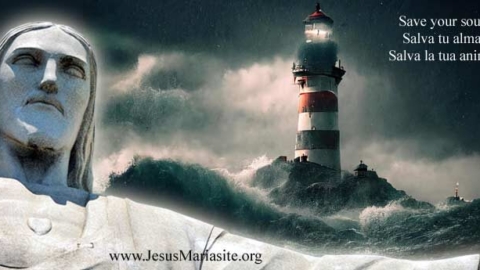
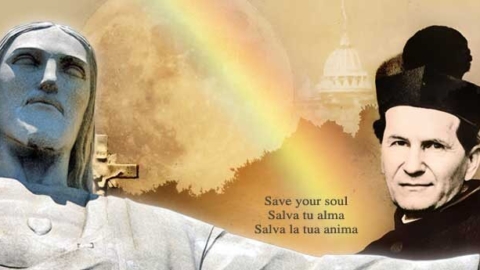
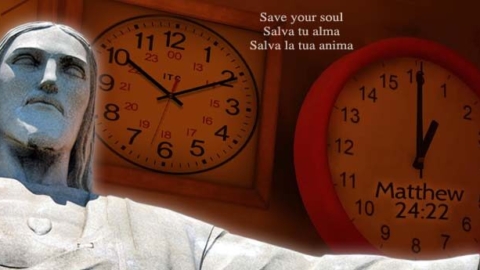






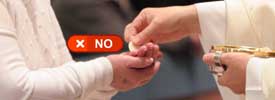






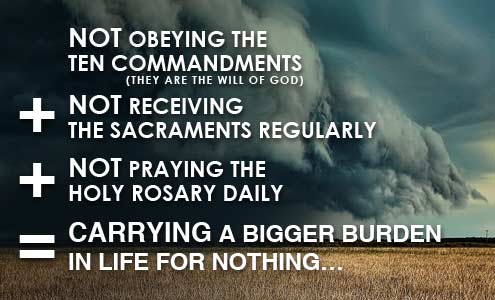
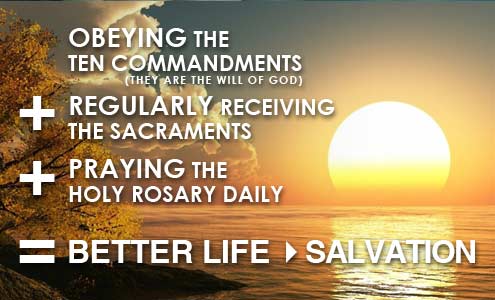

 Pray for the Church, its Hierarchies, the validly ordained and consecrated during this time of confusion and apostasy. Do not fall into the trap of division, even with apparent good reasons. Turn your eyes to the lives of saints, such as St. Martin de Porres, St. Padre Pio of Pietrelcina, the former discriminated against and the latter fought by the same institution. Let their behavior in adversity be an example for you to follow…
Pray for the Church, its Hierarchies, the validly ordained and consecrated during this time of confusion and apostasy. Do not fall into the trap of division, even with apparent good reasons. Turn your eyes to the lives of saints, such as St. Martin de Porres, St. Padre Pio of Pietrelcina, the former discriminated against and the latter fought by the same institution. Let their behavior in adversity be an example for you to follow…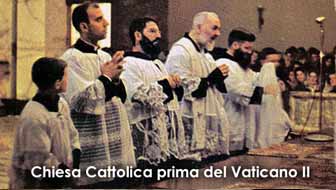
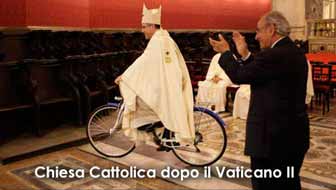
 “The Church is God’s house. It is forbidden for men to enter here with bare arms and wearing shorts. It is forbidden for women to enter wearing trousers, bare headed, with short, low-necked or sleeveless dresses.”
“The Church is God’s house. It is forbidden for men to enter here with bare arms and wearing shorts. It is forbidden for women to enter wearing trousers, bare headed, with short, low-necked or sleeveless dresses.”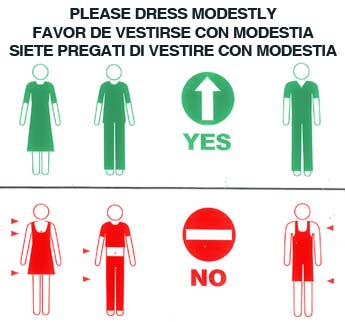
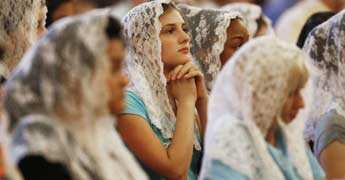
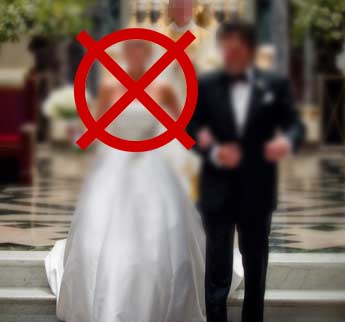
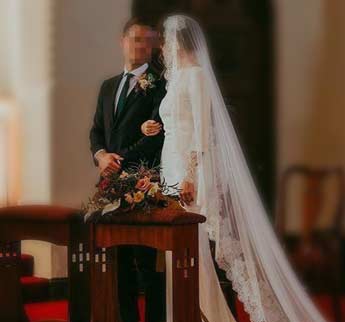
 “Parents, correct the ways if your family, have much dialogue with your children, make time to listen to them as many homes are being lost due to lack of love, dialogue, understanding and most specially for not inviting God. Take God back into your homes, pray my Holy Rosary, as the family that prays together stays together.”
“Parents, correct the ways if your family, have much dialogue with your children, make time to listen to them as many homes are being lost due to lack of love, dialogue, understanding and most specially for not inviting God. Take God back into your homes, pray my Holy Rosary, as the family that prays together stays together.” 



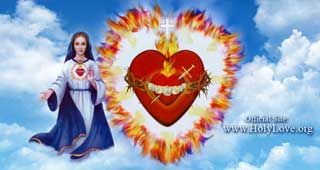
 January 31, 2022 "Heavenly Father, today, I surrender to You my heart. Help me to be Your instrument in the world. Cover me with the Precious Blood of Your Divine Son. Guard me against all evil. Protect me from any evil plan Satan may have for me today. Clothe me in Your Divine Will. Amen"
January 31, 2022 "Heavenly Father, today, I surrender to You my heart. Help me to be Your instrument in the world. Cover me with the Precious Blood of Your Divine Son. Guard me against all evil. Protect me from any evil plan Satan may have for me today. Clothe me in Your Divine Will. Amen" "O Hearts of Jesus and Mary; I consecrate myself, I consecrate my family and the whole world, to your Most Beloved Hearts. Listen to the supplication which I making to you and accept our hearts in Yours, to be delivered and protected we, the whole world, from all evil and all sin. May the protection of your Two Hearts be refuge, strength, and protection, in the daily spiritual struggles. That the power of your Two Hearts irradiates the world so that it is protected from evil and sin. We willingly consecrate ourselves and consecrate all mankind to your Hearts; sure and confident, for your Great Mercy, to obtain the victory over the forces of evil in this world, and the eternal Glory in the Kingdom of God. Amen"
"O Hearts of Jesus and Mary; I consecrate myself, I consecrate my family and the whole world, to your Most Beloved Hearts. Listen to the supplication which I making to you and accept our hearts in Yours, to be delivered and protected we, the whole world, from all evil and all sin. May the protection of your Two Hearts be refuge, strength, and protection, in the daily spiritual struggles. That the power of your Two Hearts irradiates the world so that it is protected from evil and sin. We willingly consecrate ourselves and consecrate all mankind to your Hearts; sure and confident, for your Great Mercy, to obtain the victory over the forces of evil in this world, and the eternal Glory in the Kingdom of God. Amen" "O Virgin of Carmel, may the power of your Holy Scapular take away from me the enemy of my soul; bless me, Mother of Carmel, and deliver me from all evil and danger in this world. I ask you O Mother, that in the hour of my death, your Holy Scapular frees me from the fury of the devil and in the eternity, of the eternal fire. Amen"
"O Virgin of Carmel, may the power of your Holy Scapular take away from me the enemy of my soul; bless me, Mother of Carmel, and deliver me from all evil and danger in this world. I ask you O Mother, that in the hour of my death, your Holy Scapular frees me from the fury of the devil and in the eternity, of the eternal fire. Amen" 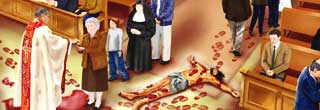
 "Oh Jesus of Divine Mercy, hear my pleadings to you, for I am here to do your Will"
"Oh Jesus of Divine Mercy, hear my pleadings to you, for I am here to do your Will" "O glorious St. Joseph! by your profound humility, by your unalterable meekness, by your invincible patience, by your angelic purity and perfect fidelity that made you a timely imitator of the virtues of Jesus and Mary, I ask you to console me in all my sorrows, to guide me in all my doubts, to defend me in all temptations, to deliver me from all spiritual and material dangers; to extend your arm against all my visible and invisible enemies, breaking and destroying all the snares and barriers that they tend and arm against me. Amen"
"O glorious St. Joseph! by your profound humility, by your unalterable meekness, by your invincible patience, by your angelic purity and perfect fidelity that made you a timely imitator of the virtues of Jesus and Mary, I ask you to console me in all my sorrows, to guide me in all my doubts, to defend me in all temptations, to deliver me from all spiritual and material dangers; to extend your arm against all my visible and invisible enemies, breaking and destroying all the snares and barriers that they tend and arm against me. Amen"  "Oh, blessed Saint Michael, protect us from the attacks and snares of the evil spirits because you know full well that we are poor mortals, fragile and weak, in need of the Mercy of God and of your protection to fulfill the mission that Heaven has commissioned to us. Oh, Saint Michael, may your victorious cry: “who is like God? no one is like God”, suppress and cast into Hell satan and all the evil spirits who prowl about the world seeking the destruction of souls. Amen"
"Oh, blessed Saint Michael, protect us from the attacks and snares of the evil spirits because you know full well that we are poor mortals, fragile and weak, in need of the Mercy of God and of your protection to fulfill the mission that Heaven has commissioned to us. Oh, Saint Michael, may your victorious cry: “who is like God? no one is like God”, suppress and cast into Hell satan and all the evil spirits who prowl about the world seeking the destruction of souls. Amen"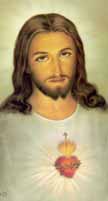 Most sweet Jesus, redeemer of the human race, look down upon us, humbly prostrate before your altar. We are yours and yours we wish to be; but to be more surely united with you, behold each one of us freely consecrates himself today to your most sacred heart. Many, indeed, have never known you, many too, despising your precepts, have rejected you. Have mercy on them all, most merciful Jesus, and draw them to your sacred heart. Be you king, O Lord, not only of the faithful who have never forsaken you, but also of the prodigal children who have abandoned you; grant that they may quickly return to their father’s house, lest they die of wretchedness and hunger. Be you king of those who are deceived by erroneous opinions, or whom discord keeps aloof, and call them back to the harbor of truth and unity of faith, so that soon there may be but one flock and one shepherd. Be you king also of all those who sit in the ancient superstition of the Gentiles, and refuse not you to deliver them out of darkness into the light and kingdom of God. Grant, O Lord, to your Church, assurance of freedom and immunity from harm; give peace and order to all nations, and make the earth resound from pole to pole with one cry: Praise to the divine heart that wrought our salvation; to it be glory and honor forever. Amen.
Most sweet Jesus, redeemer of the human race, look down upon us, humbly prostrate before your altar. We are yours and yours we wish to be; but to be more surely united with you, behold each one of us freely consecrates himself today to your most sacred heart. Many, indeed, have never known you, many too, despising your precepts, have rejected you. Have mercy on them all, most merciful Jesus, and draw them to your sacred heart. Be you king, O Lord, not only of the faithful who have never forsaken you, but also of the prodigal children who have abandoned you; grant that they may quickly return to their father’s house, lest they die of wretchedness and hunger. Be you king of those who are deceived by erroneous opinions, or whom discord keeps aloof, and call them back to the harbor of truth and unity of faith, so that soon there may be but one flock and one shepherd. Be you king also of all those who sit in the ancient superstition of the Gentiles, and refuse not you to deliver them out of darkness into the light and kingdom of God. Grant, O Lord, to your Church, assurance of freedom and immunity from harm; give peace and order to all nations, and make the earth resound from pole to pole with one cry: Praise to the divine heart that wrought our salvation; to it be glory and honor forever. Amen.